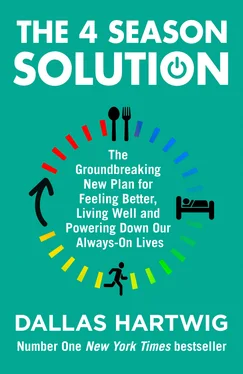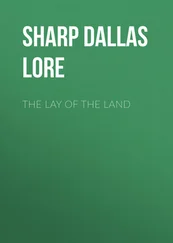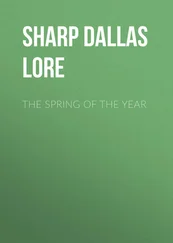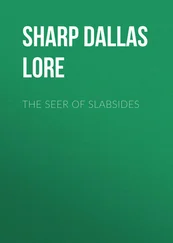We also don’t move our bodies in tune with the rhythms of nature as they’re evolved to do, so we either stay sedentary and develop related chronic diseases, or we cajole ourselves into exercising in highly contrived ways, leaving us vulnerable to injuries or other stress-related problems. While the modern features of low-nutrient processed food, sedentary and overstimulating lifestyles, and chronically disrupted circadian rhythms are most certainly problematic, there is yet another direct influence on our overall health and quality of life that is emerging as massively impactful: loneliness and social isolation. We feel disconnected from others, so we turn to social media as a panacea for loneliness and as a facsimile for deep companionship—which makes us feel even more disconnected. We fall prey to depression, anxiety, substance abuse, and worse. We lose touch with our four primary lifestyle variables—sleep, eat, move, and connect—that are essential to living well. In contrast to our hunter-gatherer ancestors, who slept, ate, moved, and connected according to annual seasonal changes, today we sleep poorly and erratically, move infrequently or excessively, eat processed, nutrient-poor, and inflammatory foods, and connect artificially while remaining essentially isolated. This creates a closed loop, a self-perpetuating cycle, because the less we exercise or the more stress we experience or the more poorly we sleep, the more we turn to “comforting” processed foods and stimulating media that in turn further disrupt our sleep or contribute to inflammatory health issues, priming us to scroll through social media late at night (instead of connecting vulnerably with an actual person), leaving us feeling less-than, left out, and often very, very alone. The brilliant Austrian psychologist Viktor Frankl is often credited with saying, “When a person can’t find a deep sense of meaning, they distract themselves with pleasure.” 6Is this not the everyday experience for many of us? Individually and collectively, we have not made seeking our life’s meaning a priority (in part because we’ve been conditioned by cultural norms), thus opening ourselves up to pleasure seeking and addictions of all flavors as ways of coping with feeling adrift and without direction. Additionally, our civilization is built on pervasive themes of expansion, consumption, stimulation, self-gratification, and the “pursuit of happiness,” which only serves to alienate us from that deeper sense of meaning and contribution that could act as our North Star, our guiding light.
While we may be living longer than our prehistoric ancestors, we are not living better ; research suggests that we are getting sicker and living less satisfying lives. In fact, the more I read about our modern disconnection from natural rhythms, the more I found myself increasingly questioning, as Thomas Paine did back in 1795, “whether… civilization has most promoted or most injured the general happiness of man…” 7
Despite our growing recognition of the problems with modernity, the solution isn’t to turn back the clock of human history, giving up our houses, electricity, cars, and smartphones, and instead choosing a primitive hunter-gatherer way of life. Why would we want to do that? Even if it were possible, which it isn’t, we would be foolish to part with some of the powerful and enriching technology humanity has developed through the agricultural, industrial, and digital revolutions. But then again, back in 2006, it also would have been foolish of me to carry on with my “modern” approach to “healthy” living. As it turns out, I didn’t.
An Experiment in Living Better
Many years ago, I wondered if perhaps my sense of malaise and disconnection would improve if I started to pay more attention to my body’s intrinsic rhythms. In falling into my early adult lifestyle, I had largely accepted at face value what modern society told me to do to stay healthy and happy, but it wasn’t working. Maybe I could live better by breaking with convention and taking some small steps, guided by research and my own intuition, to become more in tune with my body’s oscillating needs.
My first move was to experiment with changing how I ate. Influenced in particular by writers like Michael Pollan, I broke from our industrialized food system and began trying to eat locally, which by definition meant eating seasonally. 8I gave up eating grapes (imported from Chile) in the wintertime, and instead ate lots of leafy greens in the spring, and more hearty stews and root vegetables in the fall. More generally, eating seasonally meant that like our ancestors in temperate climates, I began eating fresher, nutrient-dense, antioxidant-rich plant foods in the spring and summer, when they were readily available, more starchy vegetables and roots in the fall, and heartier protein- and fat-rich foods during the cooler fall and long winter.
I noticed something: the more I chose to eat whole, seasonal foods, the better I felt—not just physically, but emotionally and even spiritually. That in turn sparked me to wonder what more I might accomplish if I adjusted other behaviors so that they were in tune with nature’s fluctuations. Beginning around 2008, I went beyond food and came to think about an entire system of rhythmic living. I drew on the psychologist Abraham Maslow’s theory of the hierarchy of needs. Under his schema, our most basic needs were physiological in nature—the needs for food, water, sleep, and so on. Having met those requirements, people could then go on to satisfy their needs for a sense of security and for strong, intimate, nourishing relationships. Maslow conceived of higher-level needs as well, such as the need for feeling a sense of accomplishment or for feeling spiritually “actualized” as a person—but as he argued, you needed to satisfy lower-order needs before you began ascending the hierarchy. 9
In conceiving a model for rhythmic living, I focused on those lower-order needs and eventually thought about and researched rhythmic patterns in four distinct areas of life: how we eat, sleep, move (exercise), and connect. I construed the last of these quite broadly, focusing not merely on how we related with others, but also how we related with ourselves and how we felt a sense of connection to a place. Going beyond the more tangible connections to self, place, and others, I also addressed the importance of a deeper sense of purpose—a sense of living well while contributing to something larger than oneself. My working theory was that if I could tune in better to my body’s natural rhythms in these areas, then I could improve my overall level of health, eventually freeing myself to satisfy higher-level intellectual, emotional, and spiritual needs.
By about 2010, I had embarked on a broad and flexible experiment to rediscover and reconnect with my own body’s natural rhythms. This wasn’t a formal, rigidly structured thirty-day kind of plan, but a more fluid, ongoing set of experiments I undertook in concert with my evolving awareness of my body. In addition to continuing to eat locally, I followed my intuition and began to adjust my bedtimes and waking times so that they corresponded to seasonal patterns in the length of the day. This change alone tended to make my physical movements more rhythmic as well as more intuitively satisfying—I now moved most during the late morning and early afternoon, and significantly reduced my intense activity in the evening as the sun was beginning to set. I made my choices of activity more seasonal—weight lifting and interval training in the winter, mountain biking and hiking in the summer. When it came to structured exercise, I went for endurance training (and a lot more general activity, not just formal “exercise”) in the summer and shorter, more intense interval training and strength training in the winter to mirror the patterns that, according to my research, our ancestors (at least those in temperate climates) had likely followed. Not surprisingly, the pattern of “building” in the off-season (winter) and “conditioning” in the preseason (spring and summer) is common in competitive summer sports. In those early years of personalizing what I’d learned through my research, I also modified how I engaged with other people at different times of the year, getting out and “expanding my horizons” during the summer months, and “hunkering down” during the winter months and focusing on fewer but far more intimate relationships.
Читать дальше












